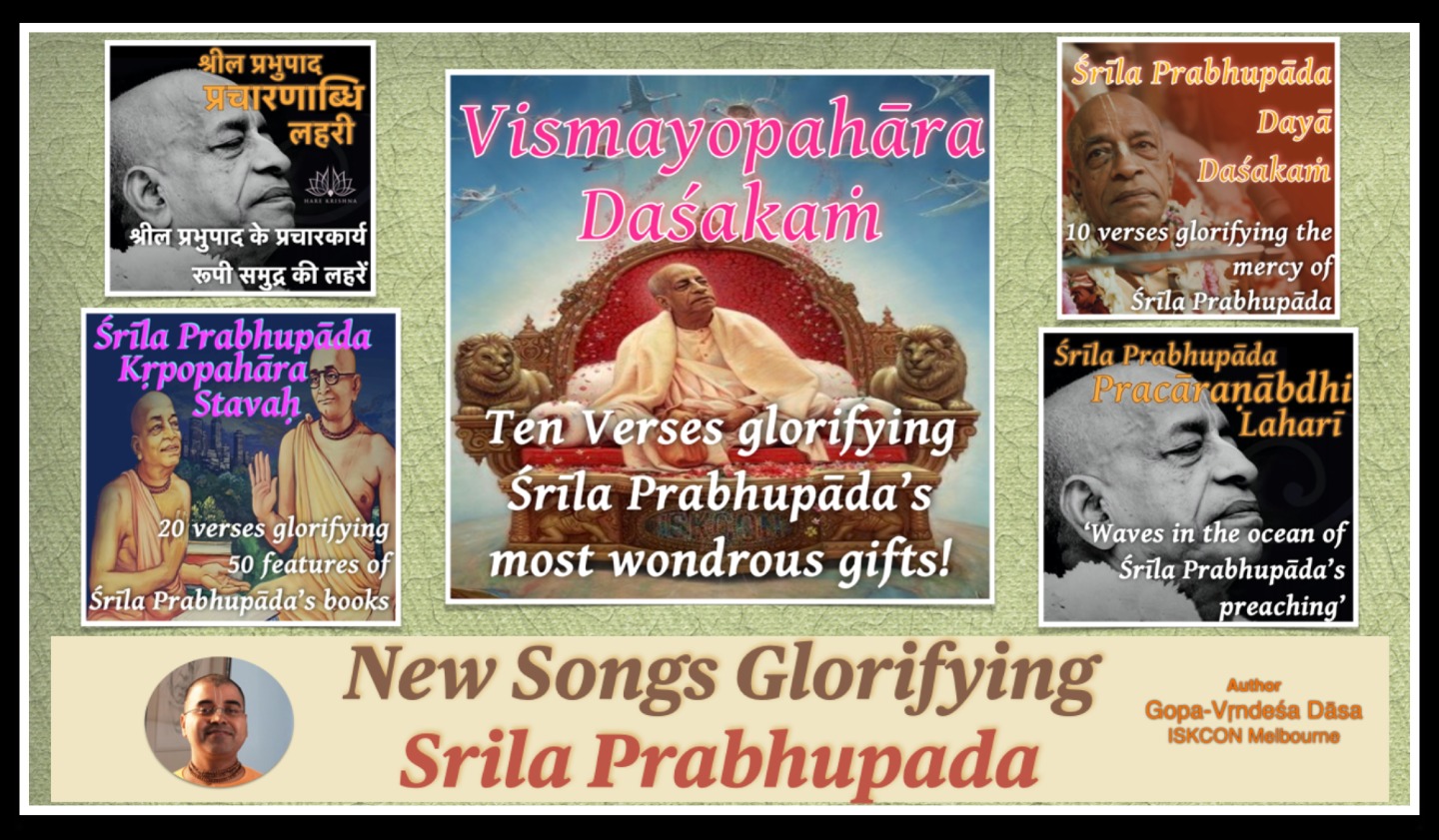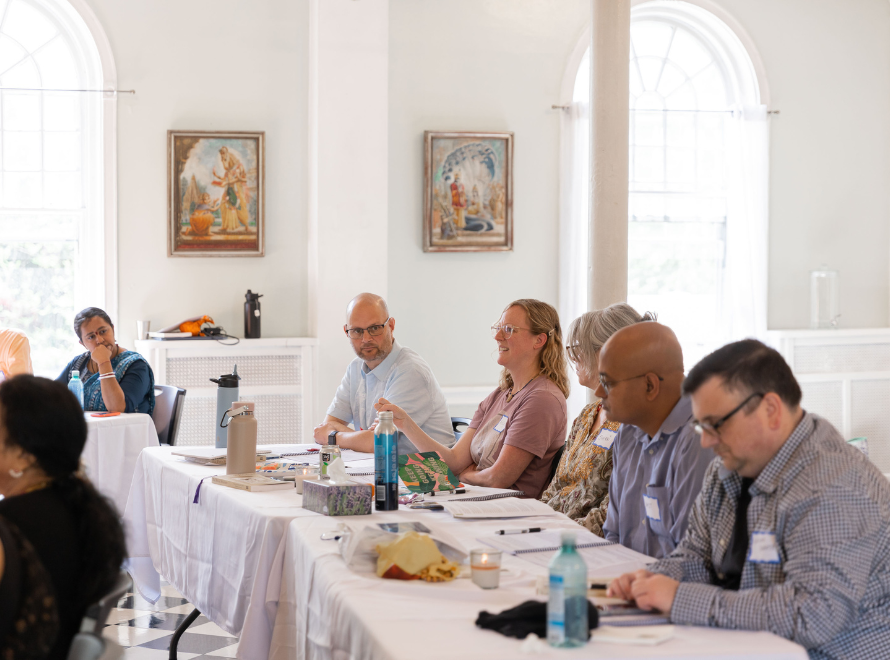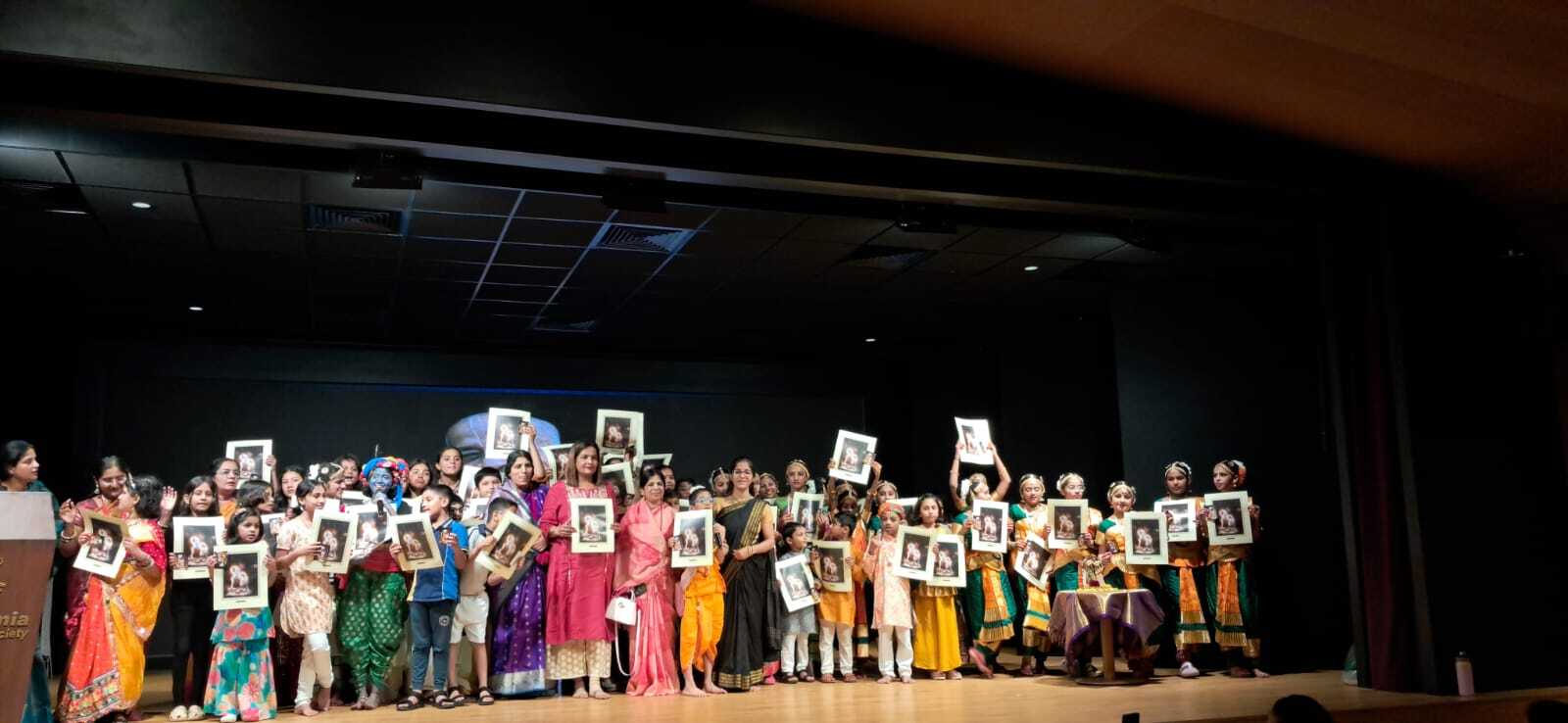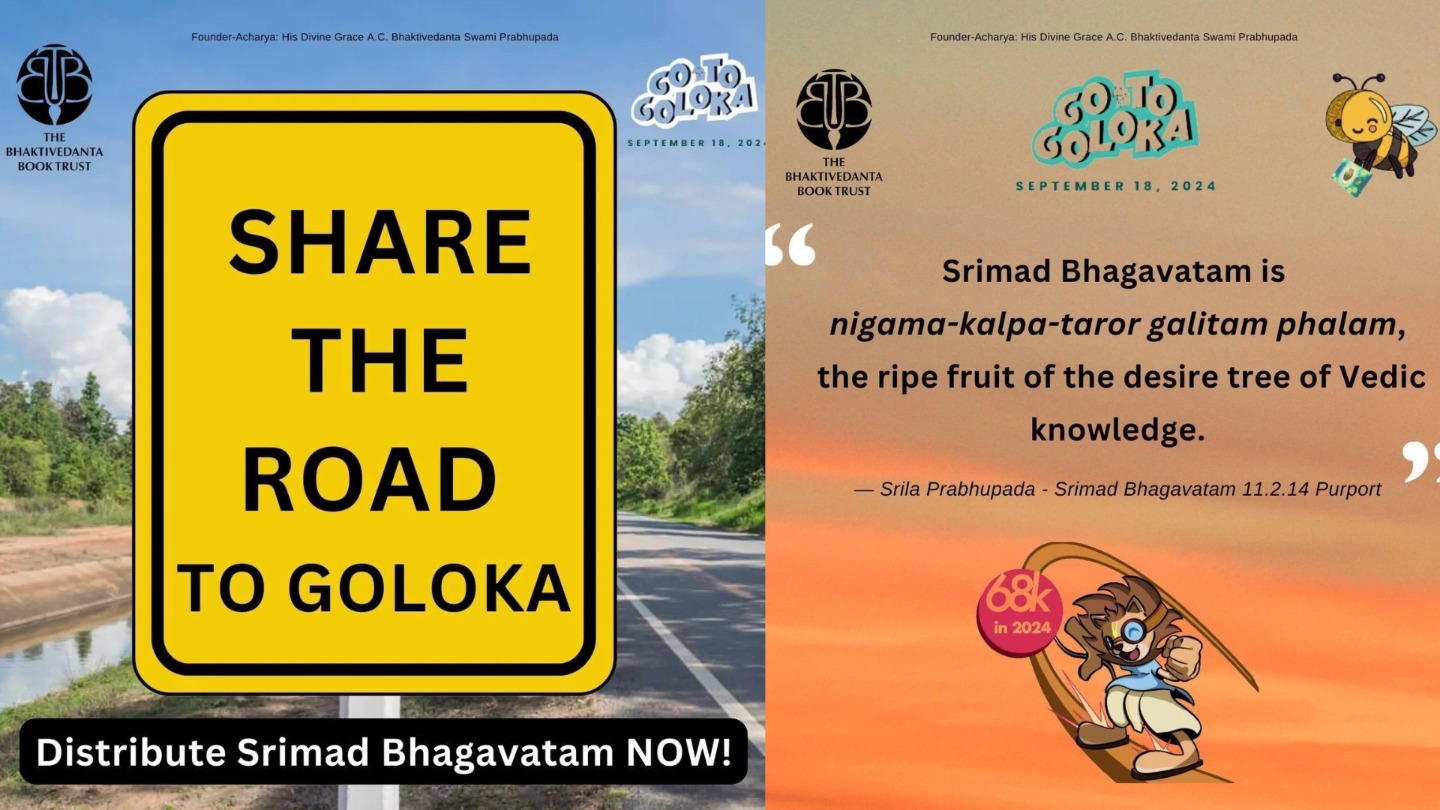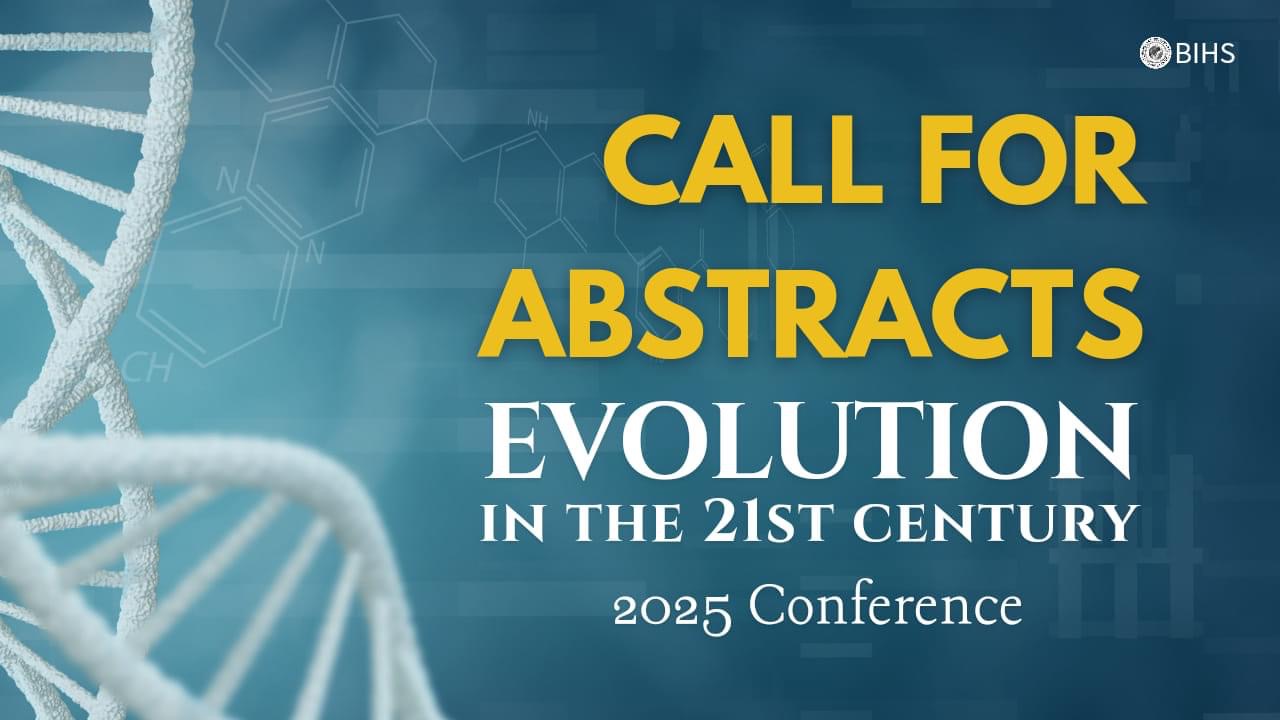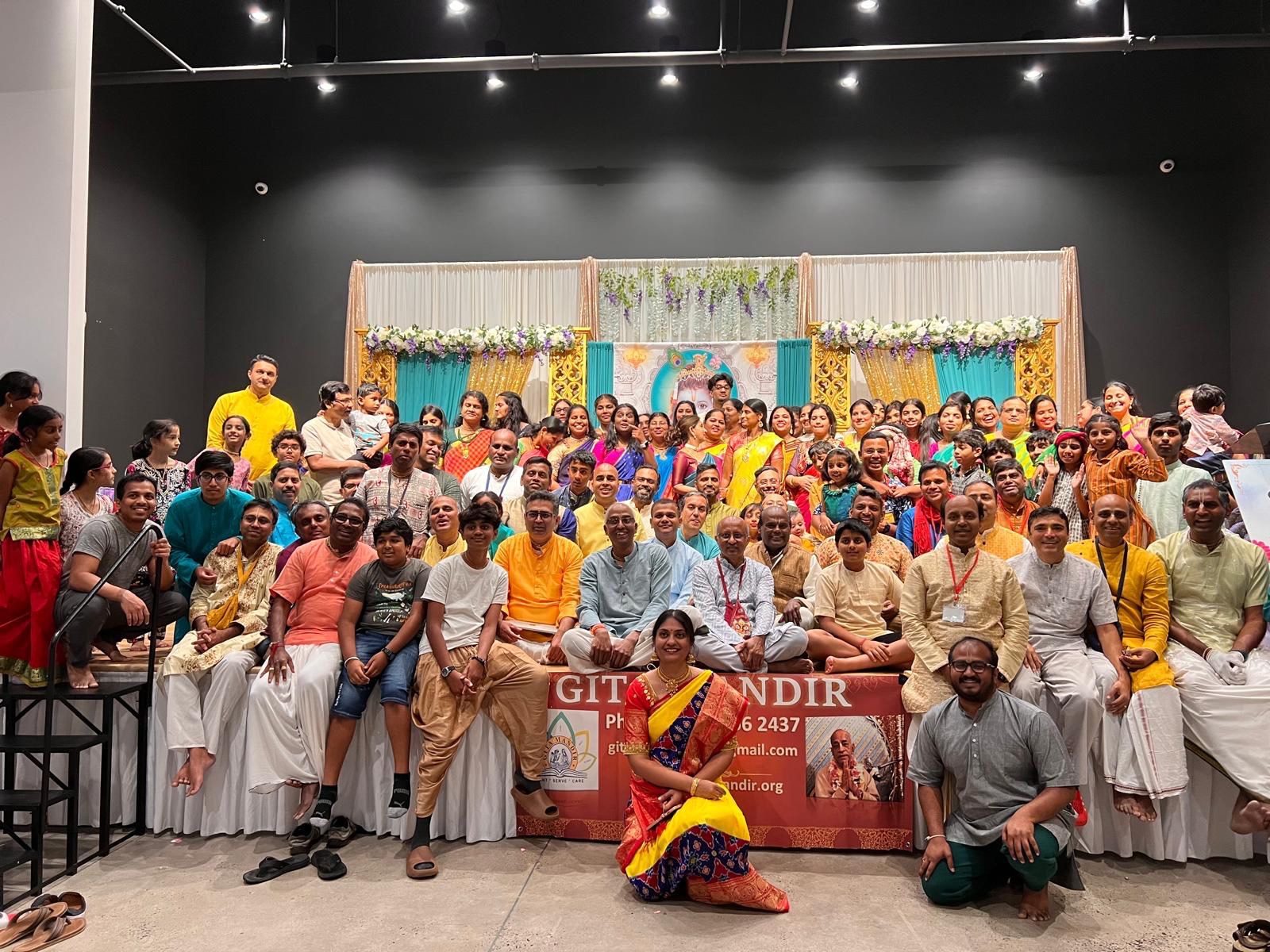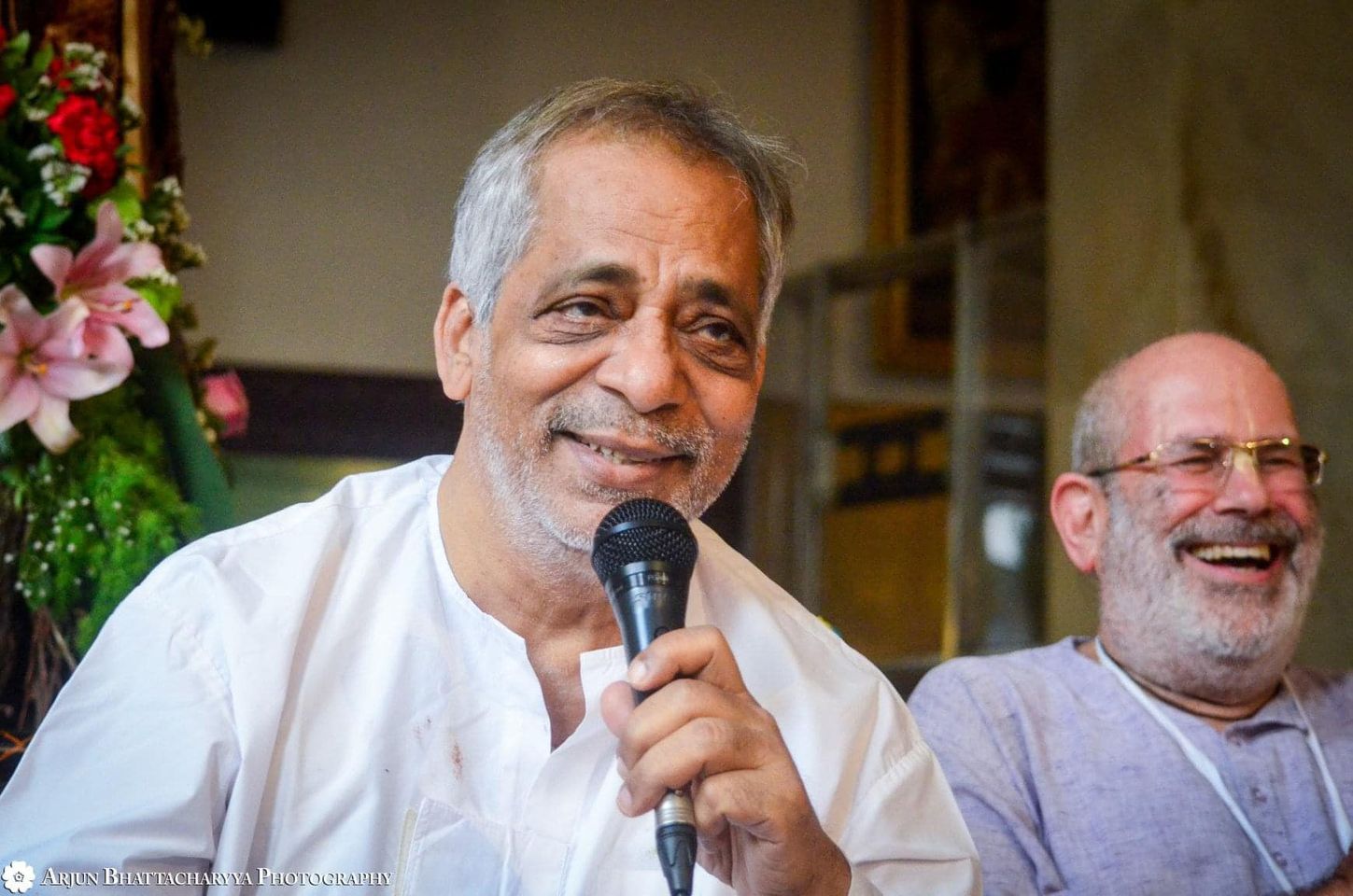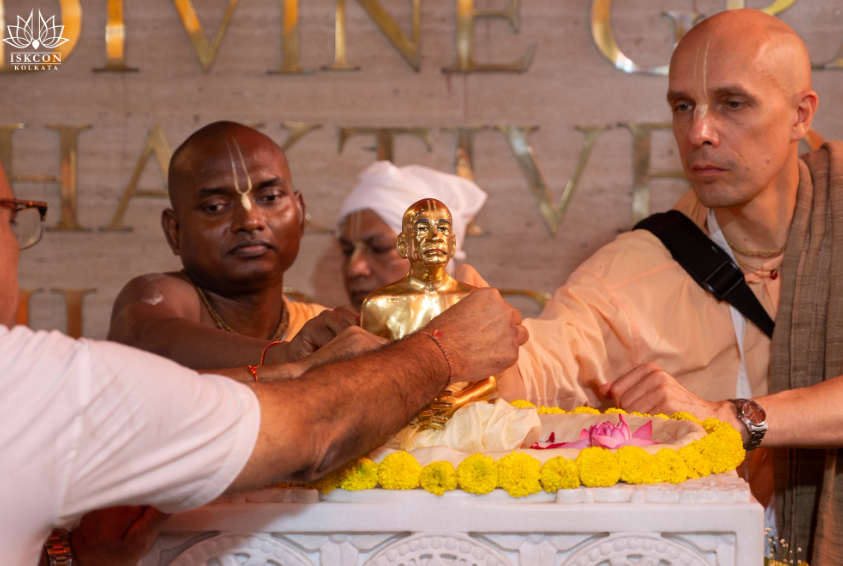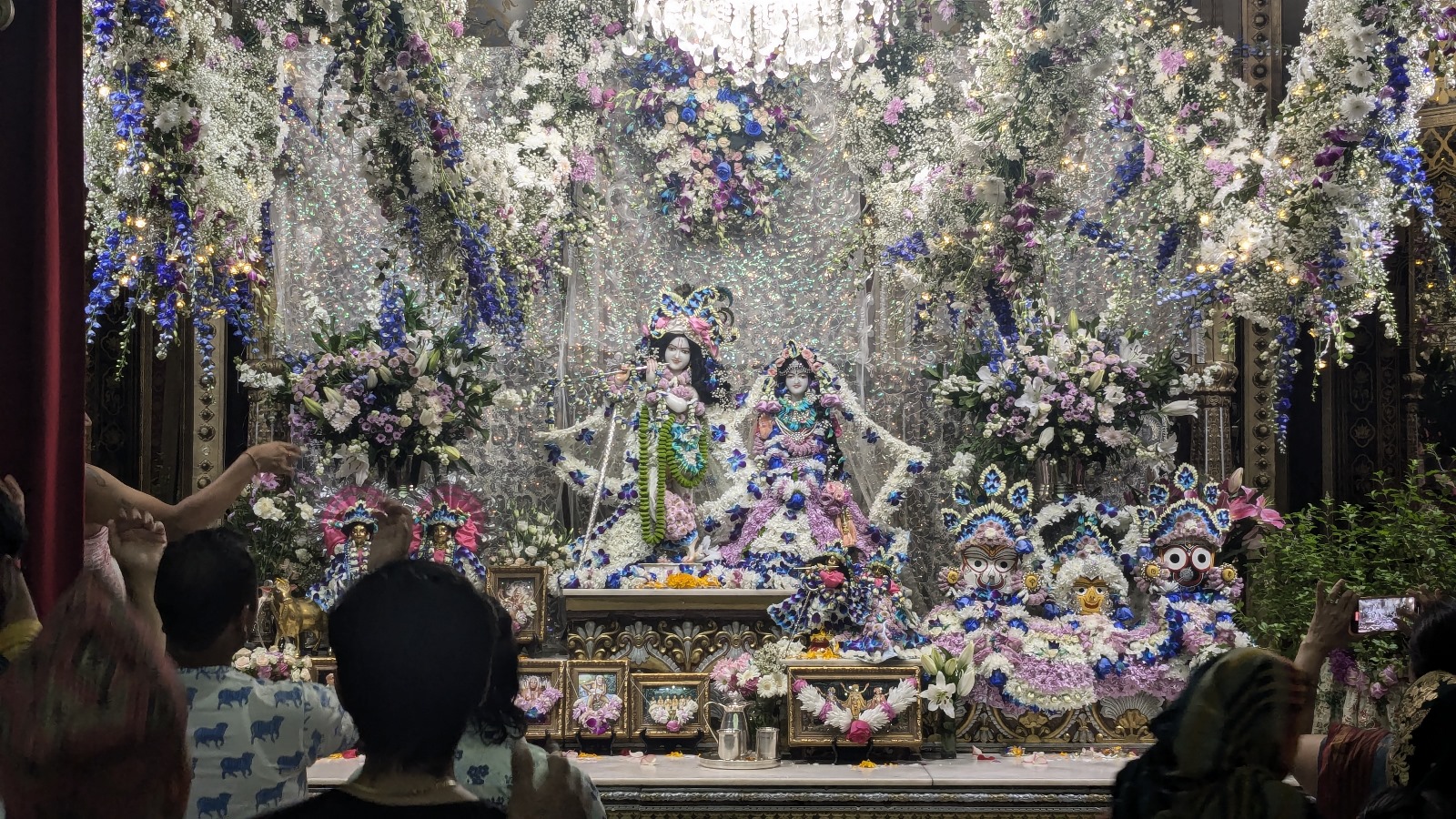The 20-Year History of the European Leadership Mela and Its Vision for the Future
By Kulavati Krishnapriya Devi Dasi, ISKCON News Staff Writer | Aug 16, 2024
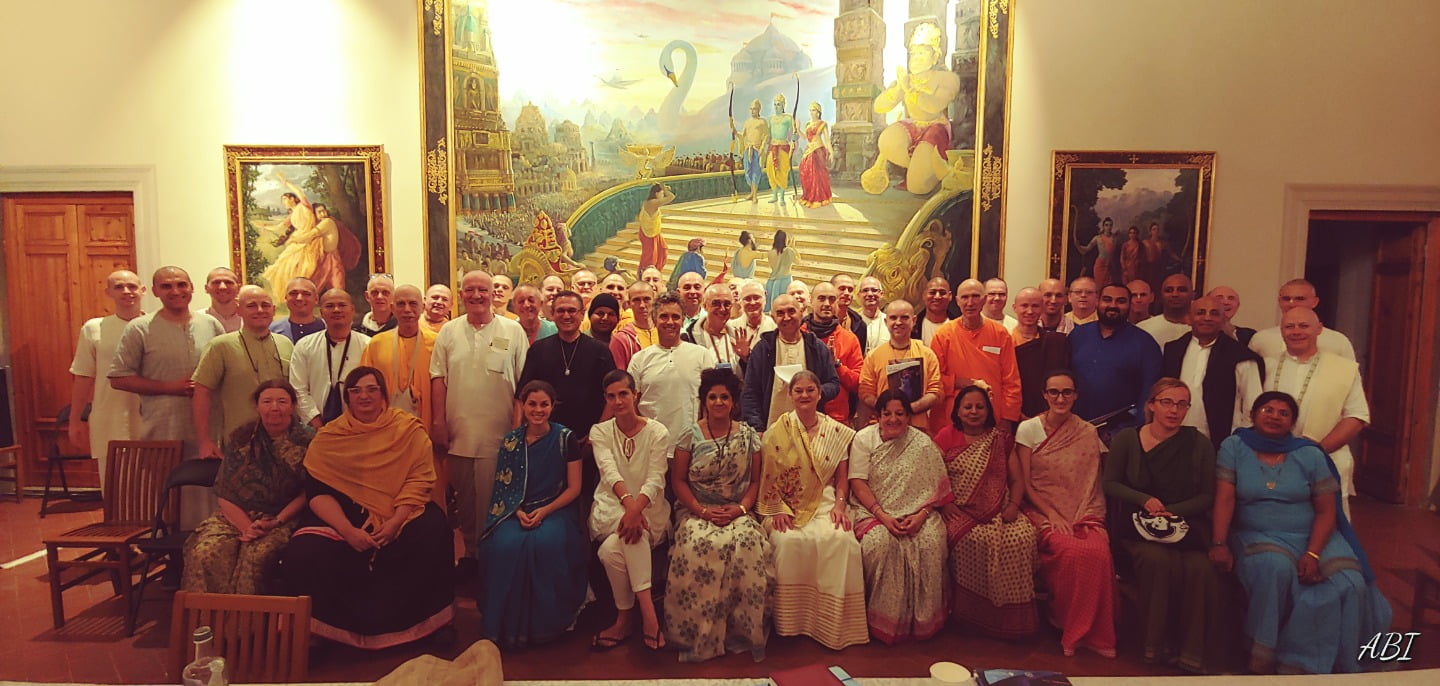
In a recent interview with ISKCON News, Praghosa Das shared important details about the establishment of the European Leadership Mela (ELM), its aims and significance in contemporary times, and the agenda for this year’s Fall ELM event.
The History and Mission of the ELM
“In Europe, just before 1997, a few years prior to the establishment of the ELM, the European RGB (Regional Governing Board) was created. In many ways, this body acts as a mini GBC for the European region,” said Praghosa Das. “The GBC body, having a fixed number of members but needing to manage an ever-growing worldwide movement, was faced with the challenge of whether to expand the GBC body continuously, which could hinder its functionality or to create a regional body to alleviate the international body’s workload.”
Although the international body remains crucial, projecting Srila Prabhupada’s vision and maintaining all the standards he put in place are best accomplished by regional bodies like the RGBs, which enable more localized governance. He continued, “Thus, the RGBs were established to allow regions like Europe to handle their issues independently as much as possible, while still referring some matters to the GBC body. We started with about 15 devotees, which was a very small representation of the many thousands of devotees in Europe. This led to the concept of the ELM, initially named the European Leaders Meeting, now known as the European Leaders Mela. The idea was to expand the leadership body beyond the RGB members to include a wider range of leaders, such as temple presidents, sankirtana leaders, project leaders, and others, representing all the leadership activities going on in Europe and congregating once a year for a Mela.”
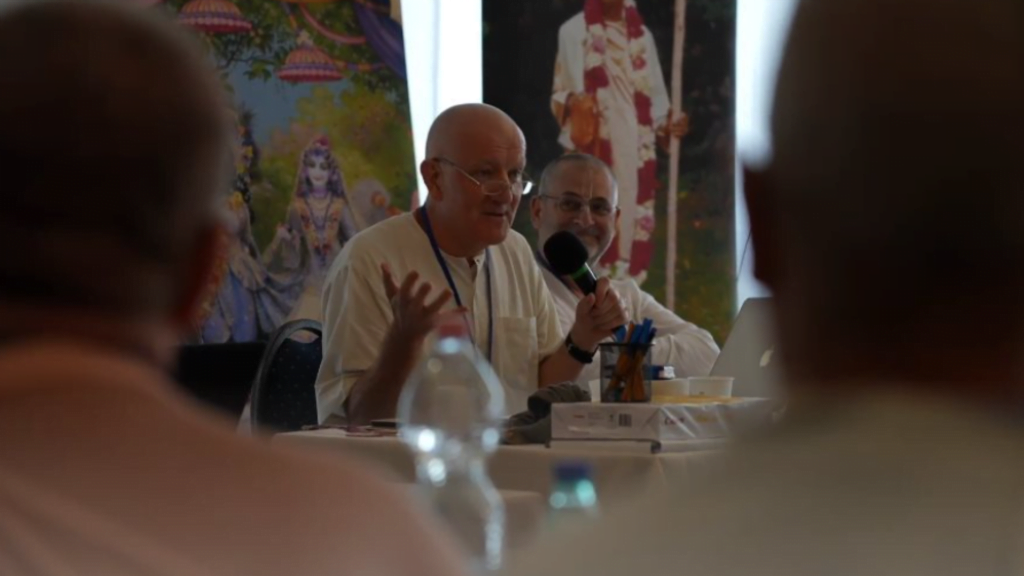
Praghosa Dasa speaking at an ELM.
The ELM is designed not to be issue-based but rather to discuss matters strategically, focusing on expansion and inspiration. The RGB sets policies and handles significant issues, while the ELM discusses strategic matters as well as proposals, which are then considered by the RGB, forming the basis of policy for Europe. Praghosa Dasa said, “The goal is for leaders to return to their service inspired and energized. The event is also intended to be enjoyable, fostering joy among European leaders. We’re reaching as many of our members as we possibly can, not that the leadership sits almost in a silo and is disconnected from the broader ISKCON family. So it’s really just a way of bringing together as many family members of ISKCON as we possibly can at least once a year.”
Unity in Diversity
The ELM strives for diversity, inclusion, and equality. Speaking about the concept of ‘unity in diversity,’ a principle emphasized by Srila Prabhupada, Praghosa said, “‘He actually instructed that the GBC meet at least once a year to discuss it. But how to unify all is the challenge. There’s so much diversity in regular society that can lead to factions, as a result of which there can be disputes that can ultimately lead to division and hostility.’
He added, “So we need to make these extraneous attempts to ensure ISKCON does not unwittingly go down the same road. Full unity will come automatically only when we all reach the higher platforms of devotional realization and are free from all our anarthas. Still, in the meantime, we do have to endeavor to try to strengthen the unity that we have in our movement.”
Another significant point is the principle of belonging for all people, including those with learning challenges and autism. As societal challenges like autism and ADHD become more prevalent, the ELM attempts to find ways of adapting to be more inclusive for everyone. Devotees facing such difficulties should find a welcoming environment within Krishna consciousness. This inclusivity is essential, reflecting a broader, more wholesome ISKCON.
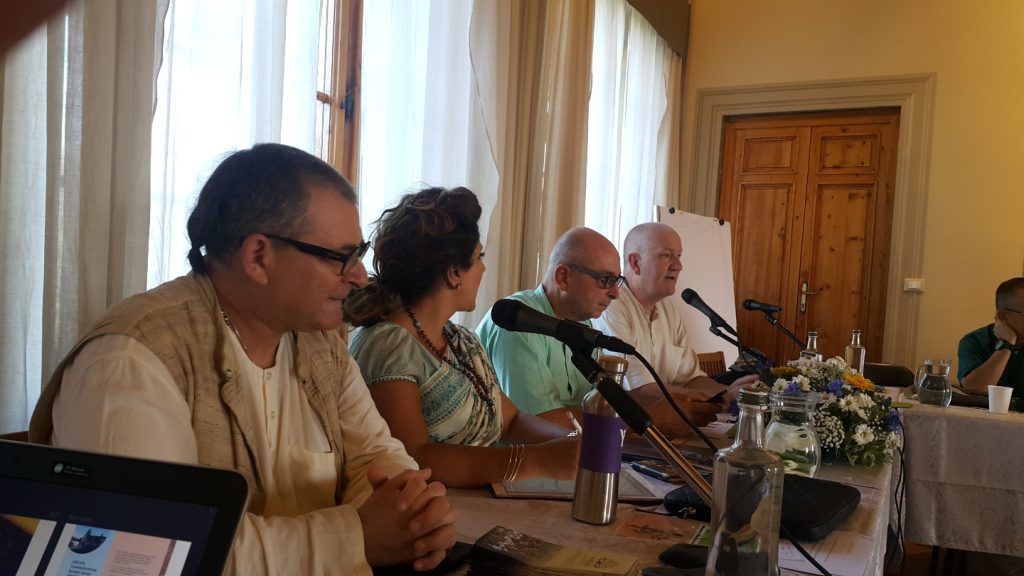
Praghosa Dasa said, “As society moves forward, personality traits and neurodiverse challenges like autism or ADHD are on the increase. So, practically speaking, if you only have one person out of a million challenged in this way, then you don’t have to give that so much attention. But if you start having a hundred people out of a million, a thousand people out of a million, 10,000 people out of a million, then obviously you have to adjust and make room for them. Nobody should be excluded from Krishna consciousness; that is what we’re trying to recognize.”
He continued, “We should be inclusive; Lord Chaitanya set this example when he preached to the untouchables. He didn’t have a restrictive, limited, and exclusive approach. We read in Chaitanya Charitamrita that He opened the storehouse of love of God for everybody. So it’s in that mood to try to include as many people as possible. We have devotees dealing with these challenges, so we should have a welcoming and inclusive mood. Without that we run the risk of ignoring, or worse, taking a callous attitude.”
Speaking about the success of the ELM, Praghosa said, “It’s been increasing year on year in terms of interest and participation which indicates to us that this is a forum that the devotees want. We send out surveys to all who attend the ELM every year for their feedback, and this time, the feedback was very positive. Devotees stress how important the ELM is and how it connects so many devotees and deepens relationships. Also, so many yatras within Europe want to host the ELM now. That’s an interesting thing because hosting these events can be a real challenge.”
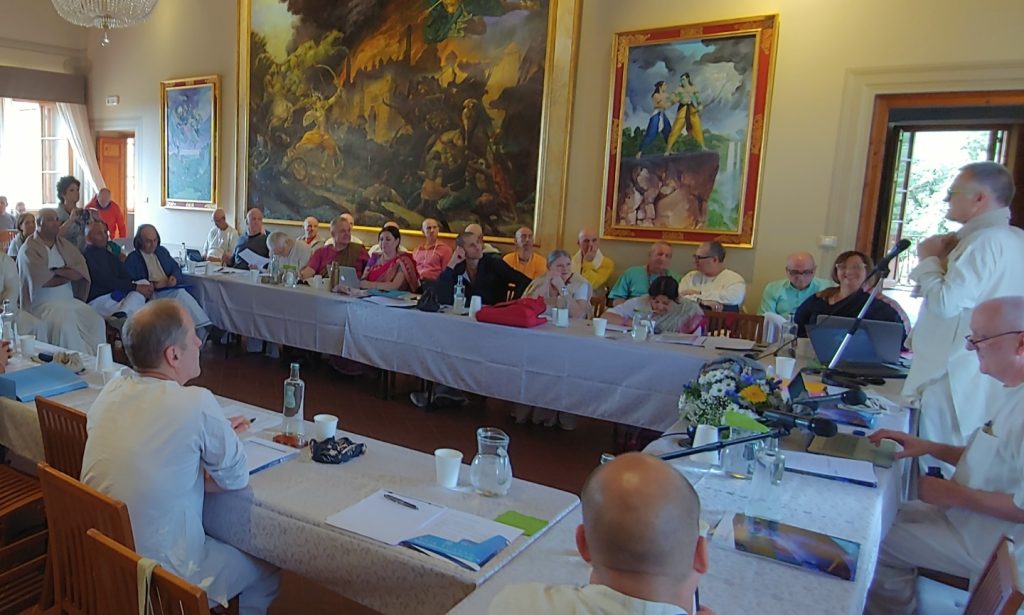
Devotee gathered for a presentation at ELM.
2024 ELM Topics
The 20th European Leadership Mela (ELM) will be held in New Mayapur, France, from September 21-22, 2024. The event is on an invitation basis only. This year’s ELM agenda will focus on leadership with presentations on “Guru succession in ISKCON, Now and Into The Future,” “Inclusive Membership and Structured Education – The Keys to Facilitating Succession,” “How to Deal With Religious Narcissism,” “ERGB Rules and Regulations Policy Unpacked,” “Overview of Conflict Resolution,” and “Youth and Succession.” There will also be an interactive session on the topic, “Are hard-copy books still relevant in the digital age?”
Praghosa Dasa added, “We will also have some of our regular items, such as yatra reports and key updates on topics like book distribution and other significant preaching events. There will also be a presentation of the annual ISKCON European Excellence Awards (IEEA) awards. Engaging and exciting agenda items are always sought, and suggestions from anyone are always welcome.”
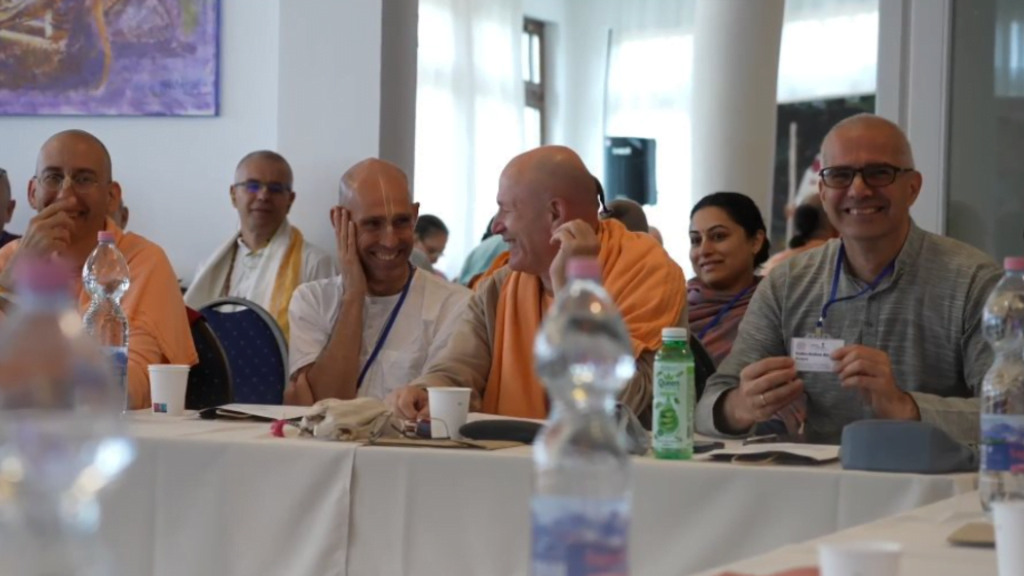
Devotees appreciating the association at an ELM.
Looking to the Future
Speaking about the future, Praghosa Dasa said, “The long-term goal is to have a convention in a large, well-known venue in Europe. Imagine having 10,000 devotees all coming together for one big meal. We could not only have different workshops and presentations explaining the work of the RGB and the ELM but also hear the ideas of participants on what they think is best for ISKCON in Europe. We wouldn’t have a convention every year, maybe every three years. It depends on the effort that would have to go into it, the finances and all of that kind of thing.”
One of the biggest challenges for holding these kinds of events and particularly trying to expand them is the finances. Praghosa Dasa said, “Our budget is a mere 1200 euros. If we had a larger budget, we could really put on something spectacular. Our efforts are not isolated but connected to all levels of management and preaching within the organization. When you have a good connection with the grassroots, the congregational members, if that connection is strong, then people are going to feel included, and they’re going to feel real ownership. They’ll feel a real part of the organization. On the flip side, if the leadership disconnects from the congregation, it risks losing members who may then look to other organizations where they might feel a stronger connection.”
He concluded, “We don’t have to worry about the philosophy or culture we’re offering; we have full faith in that, but we shouldn’t think that’s enough. We also need personal, social contact.”
For more details about ELM or if you would like to contribute to its mission, please email.







